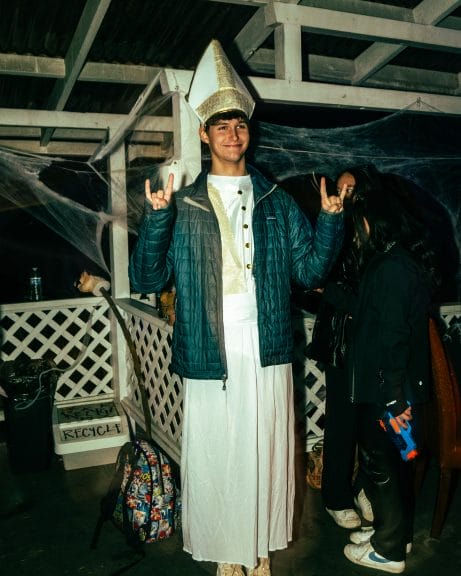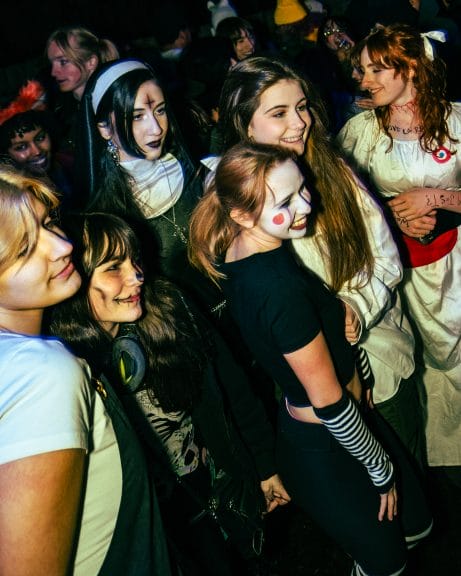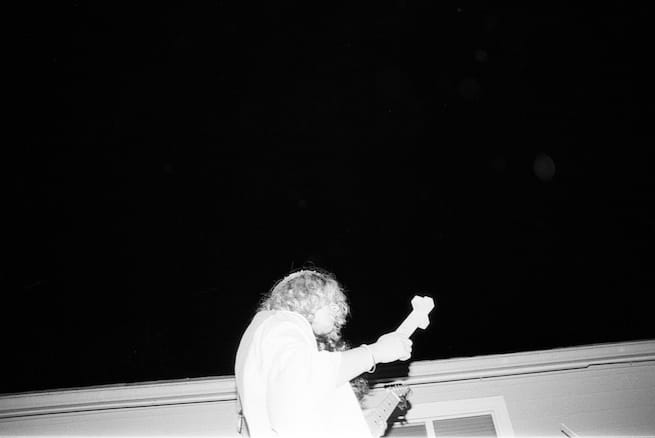Jewelry containing Christian crosses has been a major part of many fashion subcultures. The imagery of Our Lady Guadalupe has been utilized by the Latine community to embrace heritage and religious roots. The eerie aesthetics of Southern Gothic, sometimes use these to reveal the tragic irony of its origin – a heavy reliance on religion as a means to cope with life in the impoverished South.
Don’t be so cross!
Crosses, crucifixes, and even embodiments of Biblical characters can take a whole layer of meanings depending on the community utilizing them. From the bourgeoisie red carpets of celebrity fashion to the dirt and grit of urban punk-rock scenes, God can be found in glamour. This sense of faith, societal critique, and self-expression can be found in the raw realities of American life, as gory as the crucifying of Jesus Christ. Similarly, a newfound vulnerability is being showcased in these looks.
Creating art that is controversial to the Christian Church is nothing new among the Hollywood elites. A history of including Christian symbolism in art has often led to accusations of practicing the Occult.
However, some of these accusations are far more rooted in an image of purity preached by extremist religious groups. Some may be familiar with the Westboro Baptist Church for their villainous demonstrations of hateful protest. Though not reflective of the larger religious community, they are reflective of the tense social and political climate in America.
“What would an angel say? (The devil wants to know)”
Jean Deaux looks fierce under a bold and fiery look for the cover of her latest EP “Heavy” – (X / @jeandeauxmusic)
Attacks on Black and Queer musicians fuel the larger narrative of gatekeeping religious prestige to white communities. This is especially true in the case of consistently controversial musician Lil Nas X for producing visuals with biblical references. Following the backlash, Nas X has explained how his use of Christian visuals is a form of personal storytelling. Even further, he is reclaiming this sense of faith, mixed with empowerment for the Black and Queer community.
Similarly, the rebellious Doja Cat has centered much of her new style and music around accusations of her joining the Illuminati or a cult. Part of these came from a series of tattoos on her body depicting biblical scripture and demonic creatures. However, across her music videos for her latest project, as well as her recent streetwear, cross necklaces are an apparent staple. Likewise, she confronts her fans for “pushing ‘Satan this’ and ‘Satan that'” on the song “Skull And Bones”.
Punk Rock – “the devil’s music”

Streetwear of the city fashion havens like NYC and LA have seen an embrace of crosses in jewelry. Additionally, iconography is being utilized to highlight contrasting themes in Biblical scriptures and the experiences of modern urban life. For instance, black and red color palettes are often associated with the devil. Together, the pairing of these icons with dark aesthetics is giving religious symbolism a revamp of new meaning.

Most radical of all, is the use of these symbols and visuals in the punk rock scenes in urban areas. The punk community has never been one to shy away from questioning societal norms, especially true in this context. In the Seattle area, musicians and show-goers alike are rocking out and rocking cross or pentagram necklaces. Better yet, shows are advertising shows with religious dress codes. The people of punk have dressed as priests, nuns, and even Jesus Christ himself.






Perfection with a side of pentagram / Credit: Angel Kelly
Remaining true to the origins of the music genre and the larger community, young adults and aspiring artists of the Puget Sound area are radically reverent. From an outside view, it could be easy to write these themes and outfits off as intentionally insensitive.
Belonging is Biblical
Yet, this is far from the truth. These crowds predominantly filled with Queer identifying people, anarchists, and an overall community of people enraged by the world around them are reclaiming their worth. Righteous and radical, yet deserving of God’s love or any form of spiritual connection.
It would be an understatement to claim that crosses are trending, they’re nearly everywhere in fashion! However, as much as this can be seen as radical, many could view it as distasteful and disrespectful to the Christian and Catholic communities. Yet, the same sentiments could be claimed by communities affected by the exclusionary practices and elitist rhetoric promoted by these faith groups.

The question becomes, what representations of these symbols are appropriate, and where do we have room to push the boundaries? Simultaneously, is it a point to make these representations of heavenly material controversial? Between their uses from celebrities reclaiming their public image to those celebrating anarchist art forms like punk, this seems to be the case.
In conclusion, the main faces of popular music are pairing nudity with cross jewelry, re-enacting Biblical passages entirely, and positioning themselves as the modern Messiah. Though potentially problematic, it opens a larger conversation on what we are condemning and why we deem it taboo, nudity and self-empowerment being the main examples. It allows us to expand what we are allowed to celebrate, and for the punks and pop stars alike, it is community and belonging that evokes the same joy that can be found in a holy site or read in scripture.














